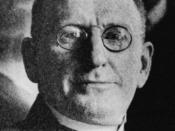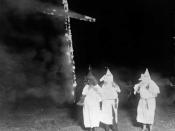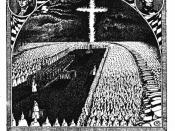In the 1920s politicians and leading Canadians took an active role in discriminating against all ethnic groups other than white Anglo-Saxons. They achieved this by feeding the dark side of humanity: fear of different cultures, prejudice and xenophobia. In the 1920s Canada treated different peoples unjustly. The Chinese were faced with ridiculous laws, the Native Americans were forced to forfeit their culture and the Ukrainians were treated with suspicion wherever they went.
In the 1920s the Aboriginals faced much prejudice in Canadian society and it was at this time that their unique way of living was most suppressed. In 1876, the Indian Act had encouraged the gradual disappearance of Indians as Indians and promoted their assimilation into Canadian society. This act had made all Indians "wards of the state" and left them with little control of their own affairs. The 1920s was the time that this act was really applied.
The Indian Act had been created earlier, but the Canadian government never seriously implemented it to get rid of the Aboriginal culture once and for all until the 1920s. The government funded Residential schools and they were an extremely effective way to make the Aboriginal children forget their traditions. At first, attendance at these schools was voluntary but in 1920 all aboriginal children between the ages of 7 and 15 were now required to go to residential schools. The children were taken from their homes and at the schools were not allowed to speak their own languages or practice any cultural or spiritual rituals. This was extremely effective as these schools made aboriginal children forget their culture and when they grew up they could not pass it on to their own children, as they themselves knew nothing other than the "great Canadian way of life." In addition, all Aboriginals were...


